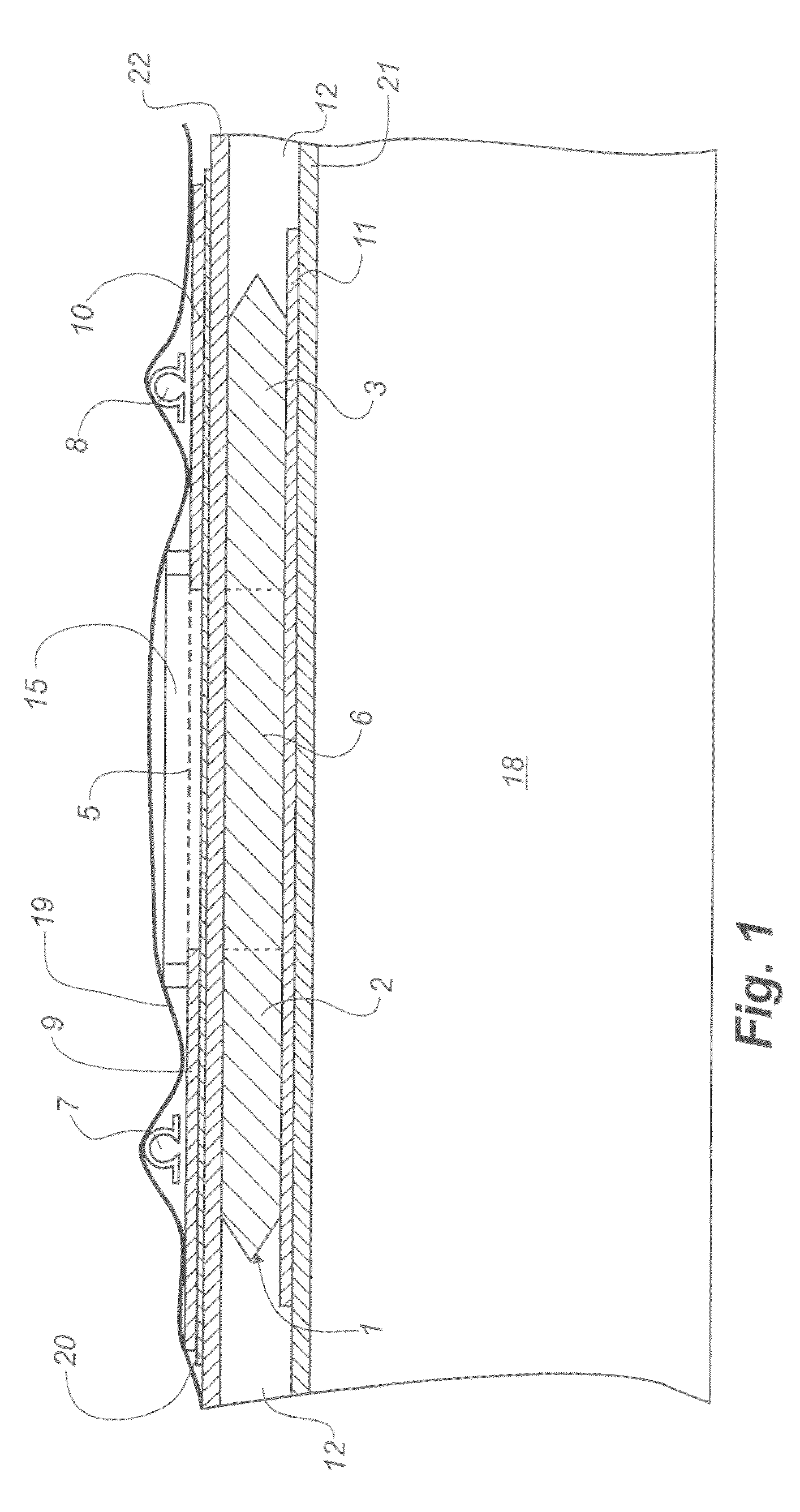Method and apparatus for providing polymer to be used at vacuum infusion
a vacuum infusion and polymer technology, applied in the field of vacuum infusion technology, can solve the problems of air pockets, difficult or impossible to remove, and ensure the complete distribution of polymer in the entire mould cavity, so as to reduce the time for filling the mould, and reduce the risk of dry spots
- Summary
- Abstract
- Description
- Claims
- Application Information
AI Technical Summary
Benefits of technology
Problems solved by technology
Method used
Image
Examples
Embodiment Construction
[0038]The section shown in FIG. 1 through a mould for manufacturing a blade shell half for a blade of a wind turbine by means of vacuum infusion shows a solid mould part 18 with a top side matching the exterior side of the finished blade shell half. For illustrative reasons the top side of said mould part 18 is shown as being plane, but it will typically be curved to the desired form of the blade shell half. First, a so-called gel coat is placed on the inner side of the mould part 18, said gel coat later on forming the outside of the finished blade shell half. Above the gel coat is placed a fibre material consisting of a plurality of lower, preferably thin, fibre layers 21, above which a lower distribution layer 11 is placed. A fibre insertion 1 is placed on top of the distribution layer 11 and the fibre layers 21, and next to said fibre insertion a filling material or sandwich material, such as balsa 12 or PVC foam, is placed.
[0039]Above the fibre insertion 1, in the shown embodime...
PUM
| Property | Measurement | Unit |
|---|---|---|
| thick | aaaaa | aaaaa |
| thick | aaaaa | aaaaa |
| thick | aaaaa | aaaaa |
Abstract
Description
Claims
Application Information
 Login to View More
Login to View More - R&D
- Intellectual Property
- Life Sciences
- Materials
- Tech Scout
- Unparalleled Data Quality
- Higher Quality Content
- 60% Fewer Hallucinations
Browse by: Latest US Patents, China's latest patents, Technical Efficacy Thesaurus, Application Domain, Technology Topic, Popular Technical Reports.
© 2025 PatSnap. All rights reserved.Legal|Privacy policy|Modern Slavery Act Transparency Statement|Sitemap|About US| Contact US: help@patsnap.com



